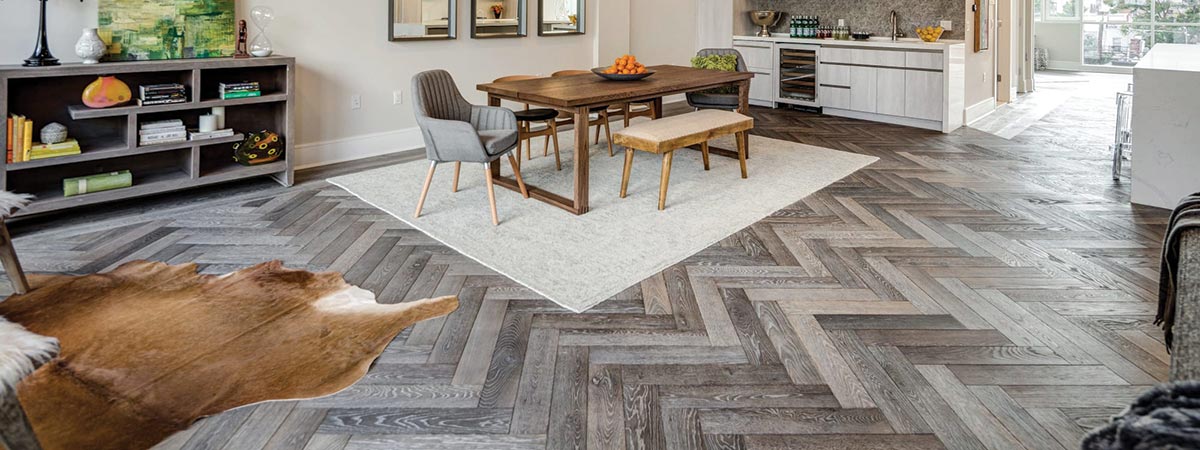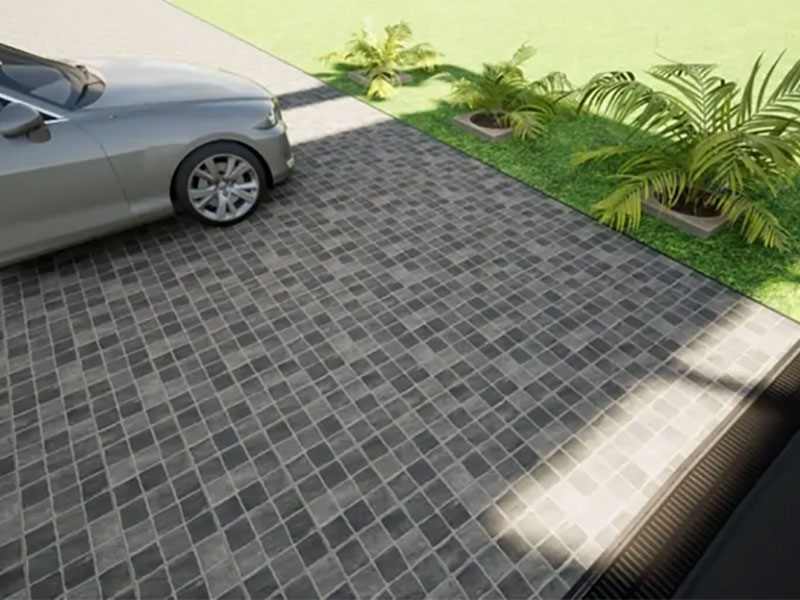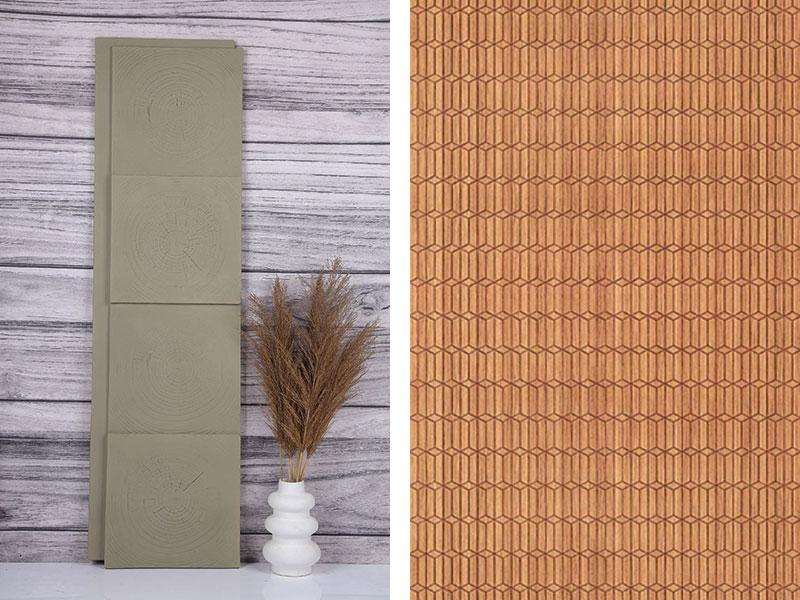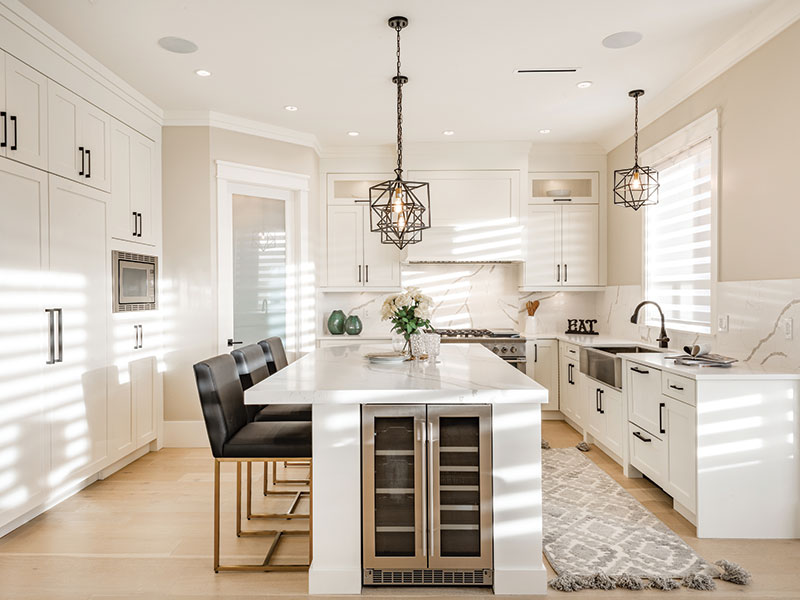Hardwood flooring dates to the 1600s, when wood began to be used more frequently for flooring, often as unfinished planks supported by wooden joists over dirt or stone. The wood floors that you see today, are diverse in species, patterns, styles and designs, as well as the types of materials used to create the flooring.
Wood has evolved to become more polished and finished and it comes in a variety of species and styles. In India, the trend of laying wooden flooring has become popular in residences, offices and commercial spaces. Concerns regarding maintenance and care of wooden flooring can be overcome with a better understanding of the material and its properties and by using simple techniques.
There are two types of real wood flooring: Solid Wood and Engineered Wood. Solid wood flooring is made from a single piece of timber, usually a hardwood. Engineered wood flooring is an engineered board - quite simply, a timber board that consists of more than one layer.
Beauty & Benefits of Engineered Wood Flooring
Engineered wood flooring is a superb alternative to a solid wood floor. In fact, once laid it looks like solid wood. It also offers exactly the same health benefits, and will last equally well. It offers a number of significant advantages since it is far more stable. This is because wood being hygroscopic, absorbs moisture. So when the surrounding humidity levels change, either due to natural changes in the climate or through the use of artificial aids like heating or air conditioning, it can swell or shrink. This can result in planks cupping or warping, or gaps opening up between them.
 The 9mm thick planks in our PurePlank range are a superb example of an excellent veneered product, with an integral cork backing for improved thermal and acoustic insulation and a prime grade timber surface protected by eight layers of UV cured matt lacquer.
The 9mm thick planks in our PurePlank range are a superb example of an excellent veneered product, with an integral cork backing for improved thermal and acoustic insulation and a prime grade timber surface protected by eight layers of UV cured matt lacquer.Wooden flooring, a supposedly ‘Western’ concept, is fast finding its way into Indian homes. It lends elegance that very few floor options can lay claim to. When touched, wood touches you right back. It attracts your attention, engaging you, grounding you and creating magic. And once you have walked on wood, you will not settle for anything less!
Aashish Poojari
Engineered wood sounds unnatural, but actually, it simply means boards made from multiple layers of timber instead of from a single layer. The top layer, known as the wear layer or lamella, is usually hardwood and, more often than not, oak. The base layers are usually softwood or multi-layered plywood, although occasionally, they may be yet more layers of hardwood. All the layers are bonded together so that the grain of each one runs at right angles to that of the layer on either side, making it virtually impossible for the board to swell or shrink.
Engineered wood flooring looks and feels just like a traditional wooden floor because the top layer is real solid hardwood, and it is perfect for use as paneling or even joinery projects like doors and tabletops as well as for floors. What’s more, it offers all the benefits of a traditional wooden floor, plus a significant number of other benefits all of its own.
Engineered wood flooring is a superb alternative to a solid timber floor, but it’s not necessarily cheaper. In addition to a better long-term fit, exceptional stability in a timber board has a number of advantages. Firstly, it means that much wider planks may be produced: 180mm wide engineered planks are quite standard; 260mm widths are not unusual. Also, it means that most engineered wood boards can be fitted over underfloor heating, unlike the majority of solid wood. Engineered wood boards offer alternative, easier methods of installation. They also make far more efficient use of the slower growing lamella layer timbers like oak and walnut.
The top layer of solid wood on an engineered board may be anything from 2 to 6mm thick. Obviously, the thicker the layer of solid wood the more times it may be sanded and refinished to remove any signs of wear; a 6mm wear layer is similar to the depth above the tongue in a traditional, solid wood tongue and groove plank.
Many wood flooring products, both solid and engineered, are now available pre-finished. This means that many hundreds of different effects can be achieved though techniques like smoking, sawing, brushing and planing, as well as use of stains and oils, and it reduces the need to use exotic, often endangered species to achieve specific effects. Not only does pre-finishing offer far greater aesthetic choice, pre-finished wood is much quicker and easier to install and avoids any ‘surprises’ on site.
If you want the look and feel of real wood in quality flooring, but are on a really tight budget, a veneer could well be the perfect answer. A veneer uses a very thin layer of real wood, usually bonded to a core of some type of composite timber product like fibre board.
















